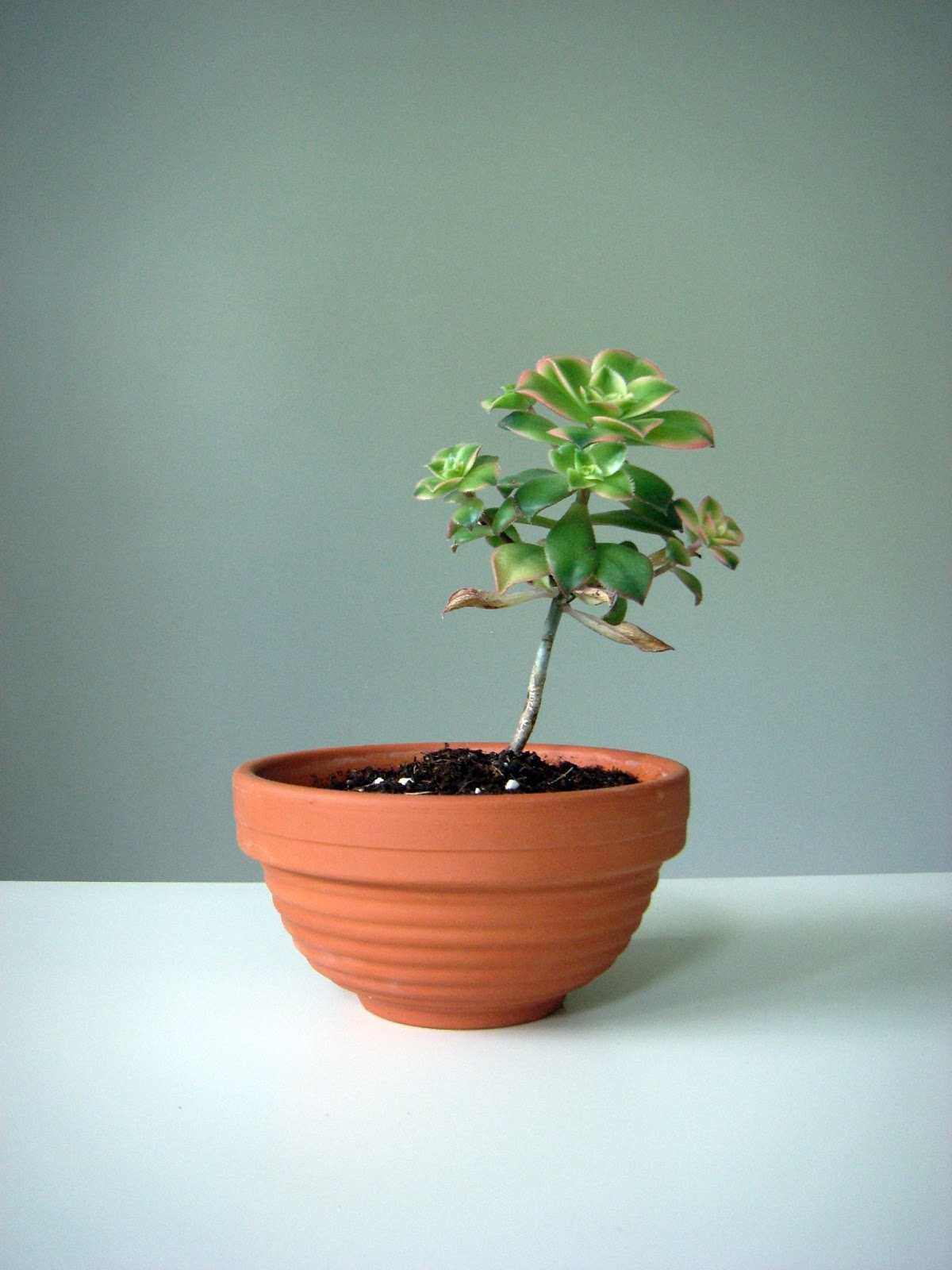order: saxifragales
family: crassulaceae
genus: aeonium
species: arboreum? (spathulatum? decorum? harworthii?)
variety: luteovariegatum?
It's a headache when it comes to identifying an unknown orpine member. Fortunately this one has a stem, so I can eliminate sempervivum. So it's either echeveria or aeonium. Next, since its leaves are attached loosely on its stem, I know it's an aeonium rather than an echeveria. The most difficult part is identifying the species and variety. Is it an aeonium arboreum 'luteovariegatum'? or aeonium harworthii 'Kiwi'? or aenonium decorum? According to some source, different aeonium species readily cross breed both in wild and in cultivation. So precision in identification shouldn't be targeted. All in all, it's a lovely aeonium.
I read that aeoniums are winter growers and like to have summer rest. When hot summer arrives, they stop growing and do not want to be watered. (Is that so?) I really am not sure. How should I know when it's sleeping already? Is it harmful if I spray some water on the surface of the soil? It can't possibly cause root rot if the soil dries up within an hour, can it?
If noone's there to answer all these questions, then I'm going to have to try it out myself.
family: crassulaceae
genus: aeonium
species: arboreum? (spathulatum? decorum? harworthii?)
variety: luteovariegatum?
It's a headache when it comes to identifying an unknown orpine member. Fortunately this one has a stem, so I can eliminate sempervivum. So it's either echeveria or aeonium. Next, since its leaves are attached loosely on its stem, I know it's an aeonium rather than an echeveria. The most difficult part is identifying the species and variety. Is it an aeonium arboreum 'luteovariegatum'? or aeonium harworthii 'Kiwi'? or aenonium decorum? According to some source, different aeonium species readily cross breed both in wild and in cultivation. So precision in identification shouldn't be targeted. All in all, it's a lovely aeonium.
I read that aeoniums are winter growers and like to have summer rest. When hot summer arrives, they stop growing and do not want to be watered. (Is that so?) I really am not sure. How should I know when it's sleeping already? Is it harmful if I spray some water on the surface of the soil? It can't possibly cause root rot if the soil dries up within an hour, can it?
If noone's there to answer all these questions, then I'm going to have to try it out myself.








